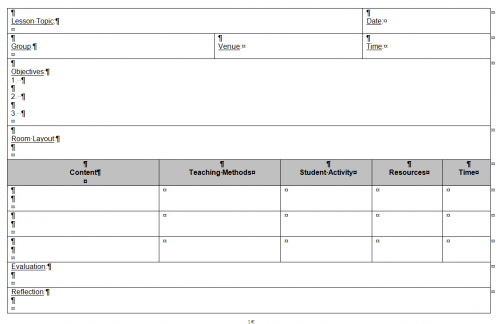Ways of documenting a lesson plan or session sequence
| Foundation Skills | |
|---|---|
| Session/learning sequencing and delivery | |
| How to plan a lesson sequence | Objectives | What is a lesson plan and why use one? | What can be included in a lesson plan? | Ways of documenting a lesson sequence | Summary | |
Once you've settled on a format for your lesson plan, it is a good idea to develop a template that will work for you in your context. An example of a template can be seen here.
The detail that you provide in a lesson plan will depend on what works for you. Some lesson plans are descriptive, others may only use a few bullet points, or maybe a flowchart works better for you. You will learn more by seeing examples of other teachers' lesson plans. These can be found further on.
- You might also want to check out some Web 2.0 tools you can use to plan a lesson, informally.
- Lino IT uses a virtual canvas and post-it notes.
- You can add text, colour code, move the notes around, and add documents, images and video/audio files to each.
- Trello is another useful tool for planning.
- You can set up individual virtual boards and organise a selection of 'cards' on the board. items can be labelled using different colours if that is your thing.
Explore the lesson plans of other teachers on the following websites, and check out some useful Web 2.0 tools.
Once you've seen examples of different lesson plans, think about designing a lesson plan for your context. You may currently be using a very good template, or you may have gained a few new ideas in this topic that could be used to modify your current lesson plan template.
|
